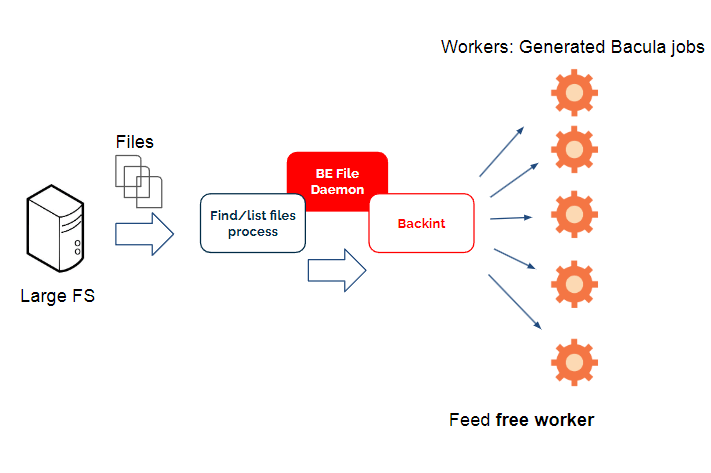This capability is applicable to any file-server or NAS use-case. For example, a large government laboratory that needs to backup an extremely large set of files, but would be unhappy to lose significant resources and time in both manually splitting up the system to backup into smaller pieces to benefit from some concurrency or waiting for a long time to see analysis processes before protecting the information, while also managing the complete backup process.
Bacula resolves the issue by automating the process and doing it through the most efficient possible form, and likely combining it with other Bacula functions, such as Incremental Backup. The process starts immediately on receiving the first file (no pre-processing is necessary), and is very efficient, using a dynamic ‘Workers’ process, where any free worker will protect the next file as soon as it finishes with the previous one, and where the system administrator can control the number of them.



